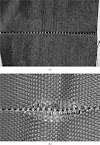Blowroom Process in Spinning
Blowroom is the very first step in spinning process after removing the cotton seeds by ginning (in case of cotton).
The cotton is normally received in spinning mill in the form of a hard pressed compact bale, in order to reduce the transportation cost. In addition to this the cotton in bale contains a significant amount of impurities collected during picking and storage in the farm. Blowroom is made by different machines like bale breaker, step cleaner, axiflow cleaner, mixer ,etc. performing various operations to achieve the objectives of blowroom.
Objectives of Blowroom are as follows –
1. Opening
First operation of the blowroom is to convert the bale into small tuft (which can be weight up to 0.1 mg) by performing opening action using various rollers in bale breaker. Further fibre to fibre separation is performed by the Carding Machine which is placed immediately after the blowroom. Blowroom employees a series of machines to carry out the opening and cleaning in gradually increasing intensity of actions.
 |
| Bale Breaker |
 |
| Cotton Bale |
2. Cleaning
Cotton bale can contain many impurities and this can be removed up to 40-70% depending upon the type of impurities present in the cotton. The cleaning of this loosened trash particles has to be performed immediately after opening. Elements such as grids, mote knives, under casing etc. are placed below the openers to facilitate cleaning.
The grid – The gird consists of triangular section bars, angle bars or blades as shown below:
However, cleaning has to be achieved at the cost of higher good fibre loss and additional stress on fibres. Normally fibres represent 40-70% of blow room waste.
3. Dust Removal
Dust removal must be carried out immediately after the opening of cotton is done. Removing dust is not an easy task. When the cotton bale is being converted into tuft, at that time suction units plays a major role in removing the dust. The process of dust removal is more effective if tufts are small. Around 64% dust is removed by the suction units. Their are many advanced dust removing machines which can be place in addition to opening and cleaning machines.
4. Blending
Blending is necessary for well assembled layout and even extraction of fibres from all bales. This further results in good quality of yarn with uniformity. Blending at various stages of spinning is an essential preliminary for the production of quality yarn.
5. Removal of contamination
Foreign materials like human hair, coloured fibres, and fibres other than the raw material type are known as contamination in spinning process which becomes objectionable in yarns & fabrics. Such contamination of raw material has to be removed before yarn goes for further processing. Contamination removing machines are therefore provided in modern blow room lines.
6. Feeding to Carding Machine
After opening, cleaning, blending blowroom feed material evenly to the carding machine.
Their are two ways of feeding :
1) Lap Feeding
2) Chute Feeding Installation
• There are two types of feeding of material of blowroom
1. Free flight feed
Material is just dropped in opening roller chamber. Requires only a drop chute, suction pipe or vortex transport from rollers. Gentle but less intensive treatment to the fibres
A. Step Cleaner
B. Creighton Opener
C. Mono – cylinder cleaner
D. Axiflow Cleaner
2. Clamped feed
Material is gripped and fed to the opening roller. Requires a special clamping (gripping) device. Intensive but less gentle treatment
A. Feed with two clamping cylinders
B. Clamped Feed with a feed roller and a feed plate (table)
C. Clamped Feed with feed roller and pedals
• Zones in the Blowroom
1) Bale Opening
2) Mild Openers (Course Cleaners)
3) Blenders
4) Fine Cleaners
5) Intensive Cleaners
6) Card Feed


















0 Comments
If you have any doubts, please don't hesitate to ask